Golden Retrievers are athletic and intelligent dogs that have gentle temperaments.
Their intelligence and gentle nature makes Golden Retriever training very easy for first time owners.
Before bringing home your golden puppy, start by puppy-proofing your home and establish house rules. Puppy-proofing is very important as retrievers love to chew!
After puppy-proofing you need to make a training schedule. This will ensure Golden Retriever puppy training is easy, fun and productive.
Keep reading to discover the best puppy training schedule and learn how to train a Golden Retriever.
TABLE OF CONTENTS
Golden Retriever Puppy Training
Before we start teaching you how to train your Golden Retriever it is important you know to only use positive reinforcement techniques.
Positive reinforcement training is easy for your dog to understand and helps to build trusting relationships.
This means rewarding good behavior with praise, food or play and never using force-based training.
Training a dog is a lifelong process and training Golden Retriever puppies is important to build a strong foundation.
Luckily Golden Retrievers are classified as Gundogs. Gundogs are easier to train than any other group of dogs. Their trainability means they are often included in service dog programs.
Finally, these dogs were originally bred to be out all day with their handlers. They need lots of physical exercise.
When you start training make sure your puppy is getting plenty of exercise throughout the day.
Let’s start training!
How To Housebreak A Golden Retriever
From Adobe Stock
Housebreaking should start straight away when your puppy arrives home.
When you arrive home with your Golden puppy go straight to the yard. After a long car journey they are very likely to want to “go-potty”.
The key to successful housebreaking is to minimize accidents indoors as much as possible.
Taking your Golden Retriever puppy out to the yard every hour is important during the first few weeks.
Getting into a positive routine from the start will help your puppy learn faster. For the first month use the schedule below:
| 06:30 – 7:30am | Toilet, breakfast, another toilet break. |
| 07:30 – 8:30am | Play, toilet, sleep. |
| 08:30 – 9:30am | Toilet, training. |
| 09:30 – 10:30am | Sleep |
| 10:30 – 12:30pm | Toilet, meal, toilet, break, play, toilet. |
| 12:30 – 14:00pm | Training, toilet, sleep. |
| 14:00 – 15:30pm | Toilet, independent play, toilet. |
| 15:30 – 16:30pm | Sleep. |
| 16:30 – 18:00pm | Toilet, training, self-play, toilet. |
| 18:00 – 19:00pm | Meal, toilet, sleep. |
| 19:00 – 22:00pm | Toilet, play, chewing, toilet, bed! |
Every time you train “go-potty” remember your Golden Retriever will present clownish and playful behaviors.
When you take him outside he will likely want to play. Ignore him and watch from a distance when he first goes outside. Wait for him to “go-potty”. As soon as he’s finished toileting immediately play with him or give him a treat. Make sure he knows he did a great thing!
If there is an accident, and there will be because puppies have small bladders, don’t shout at him. He won’t understand what he did wrong.
Instead ignore your puppy and clean the area with biological washing powder mixed with water.
As he gets older your Golden will realize that toileting in the house is boring, whereas toileting in the yard is super fun and worth him learning to hold on for!
Crate Training A Golden Retriever
From Adobe Stock
Crate training is a hugely beneficial skill to teach your puppy. It will ensure your puppy cannot do any damage if left unsupervised and creates a safe place for them to retreat to if they are tired.
Golden Retrievers (and all dogs) are wired to need to spend time with people. We need to help prepare them for separation at some point.
Crate training will help to prepare them but you need to understand that leaving your puppy alone for too long when young can be problematic in the long term!
It’s a good idea to have some rules when crate training golden retriever puppies:
- Don’t disturb or interact with your dog when he is in his crate.
- Never force him into or out of his crate.
- Provide nice things for him in his crate (e.g. treats/toys).
- Leave the door open and have the crate accessible all the time!
- Feed him his meals in there.
- Only shut the door for short periods of time to start with.
Sticking to the rules will help to create positive associations with the crate. It will teach your Golden their crate is a place he can retreat to and rest (particularly good if there are children in the house!).
You should not start crate training with the door closed.
Increasing the time they spend in their crate with the door closed can take two or three weeks. You can use the following tips to gradually increase the time your golden retriever puppy spends in their crate:
- Have a kong prepared with a small amount of tasty food pressed into it.
- Place the kong into the crate.
- Allow your puppy to follow the kong and start eating.
- Close the crate door and stand next to it.
- After they have finished eating open the crate door.
Remember never to leave an adult dog in their crate for longer than 4 hours.
How To Train Your Golden Retriever To Sit
From Adobe Stock
Training Golden Retrievers to sit is a very important and useful dog trick.
Goldens can grow to over 60 pounds. Ensuring they have a great alternative to jumping up for attention is very important.
Sit is a great behavior to train and encourages your puppy to do so if they ‘want’ something! Golden Retrievers love their food, so the easiest way to train sit is to:
- Have a closed hand with a treat enclosed.
- Place your closed hand close to their nose so they can sniff but not get to the food.
- Very slowly lift your hand in an arc above your dog’s head.
- As your puppy reaches to sniff their bottom will probably hit the floor.
- Say ‘good!’ and give them the treat in you hand.
Repeat this trick ten times over short periods of time throughout the day.
After a few days you can start to introduce the word ‘sit’ just before you move your hand. After a few more days they will learn to sit on command.
Train Your Golden Retriever To Stay
From Adobe Stock
Stay is something that does not come naturally to this dog!
Golden Retrievers are naturally very busy.
Training a Golden Retriever to stay will take a lot of patience and reward-and-repetition.
- Start by getting your Golden into a sit position.
- Then say ‘stay’ – just the once!
- Take half a step backwards, or rock backwards, and then return to your puppy.
- If they stayed sitting they can have a treat! If they broke out of the sit they don’t get rewarded.
- Repeat this several times.
- Build up the number of steps you are taking away from the puppy, before returning to them and rewarding them.
- Once you’ve built up how far you can go successfully, start adding in more distractions- maybe move your arms, jump up and down, or have someone else walk passed them!
There are two important considerations when training stay.
Only say the command once. This is important, as you want to ensure your dog will stay with just a one-word request rather than having to repeat the word before they listen!
It is also important to practice in various locations and environments so that they learn to stay regardless of what is going on around them.
As with most training, the more times a puppy is successful the quicker they will learn.
Leash Training A Golden Retriever
From Adobe Stock
Introducing a lead to a Golden Retriever is fun! They like to hold things in their mouth and so have a tendency to try and hold their own leads. If your Golden attempts this offer a toy to hold instead.
Before you try to leash train your puppy should be comfortable wearing their harness or collar.
You can now start training him to walk beside you. Remember to use plenty of food and praise when training:
- Attach the leash to their harness.
- As you attach the leash sprinkle some treats onto the floor so they don’t play with the lead.
- When they finish eating and give you eye contact reward them.
- Start rewarding them for being next to you. We need to teach your Goldie that being next to you is wonderful!
- Take a step forward and then reward them for following closely.
- Take another step, and reward them again!
- Build up to taking more and more steps before rewarding him for being by your side.
If your puppy attempts to pull then stand still. Wait for him to look back to you, at which point you can take a couple of steps back, enticing him towards you and reward him when he gets in the right position.
This is important as Golden Retrievers are a heavy and powerful.
It is crucial to train a golden retriever how to be gentle on a leash so you can enjoy walks!
Leash training needs consistent work on until adulthood gradually building up distractions and increasing your rewards.
Teaching Recall To Golden Retrievers
From Adobe Stock
Golden Retrievers are renowned for being exuberant, confident, and very playful.
Ensuring a consistent recall is very important before letting the loose on the world!
Retrievers will happily approach new dogs and people, however this may get them into trouble as not everyone wants a hairy dog saying hello!
To start training recall it is a good idea to have a long line attached to their harness. If they decide something is more interesting than your recall cue then they can’t run off!
We want to avoid them ignoring their recall cue wherever possible (to prevent poisoned cues).
As this retriever was bred to cover a lot of distance, it is a good idea to train them to return to you with a whistle (rather than your voice). A whistle will travel much further than your voice.
You can use a whistle to start training recall:
- Before every meal, simply blow your whistle (whichever pattern you like).
- Place their food down for them.
- As your puppy will be on 3-4 meals a day there will be plenty of opportunity across for them to learn that the whistle= food!
- After a week you should now use the whistle in other contexts.
- If your puppy is in the same room as you blow your whistle.
- Your puppy should come running towards you! When they reach you, reward them with some tasty treats.
After a few weeks of indoor whistle use, your puppy will have learned the whistle can occur anywhere.
At this point, you can start increasing how distracting the environment is when you blow the whistle. The yard is a good next step as it is usually associated with free play time!
If they continue to respond well, practice when out on walks.
Training A Golden Retriever Puppy Not To Bite
From Adobe Stock
Golden Retrievers have been bred for generations to hold things in their mouth. Whilst trained gundogs will hold things gently, this is a skill that takes time and practice.
As puppies, these dogs enjoy using their mouth to explore the world.
This is a normal part of being a puppy.
However, is it important we train them that they can not play with humans using their mouths.
Here are a few tips to help with mouthing.
Adopting a consistent routine will help you to pre-empt mouthing. Most puppies tend to mouth when they are hungry, tired, or need the toilet.
Provide a wide range of toys and chews for your Golden Retriever puppy to enjoy. When playing with your puppy make sure to use these chews and avoid fighting or rough housing.
Puppies lose their puppy teeth from 16 weeks of age, so expect more mouthing around this time. You can provide relief by feeding frozen carrots.
If your Golden decides to mouth your hands or ankles then withdraw all attention. This teaches your puppy that play stops if their teeth touches your skin. Return to your puppy after 10 seconds and play again.
Most puppies will stop mouthing at six months of age.
If they are mouthing a lot, look at your puppy’s routine. Are they hungry? Are they tired? Both of these can affect your puppy’s self-control.
Summary
Structured Golden Retriever training is key in developing a bond with your puppy and preventing problematic behaviors.
The best way to train a golden retriever puppy is to set aside short periods of time, multiple times a day. Remember that puppies struggle to concentrate for long periods of time and are easily distracted.
Keep your training sessions short.
Remember, training something easy like sit is much faster than loose leash walking, so be realistic with your goals.
Spend lots of time playing with them. Embrace their comical and friendly nature, and keep working with them! They are smart dogs and love to learn.
Happy training, leave us any questions below.
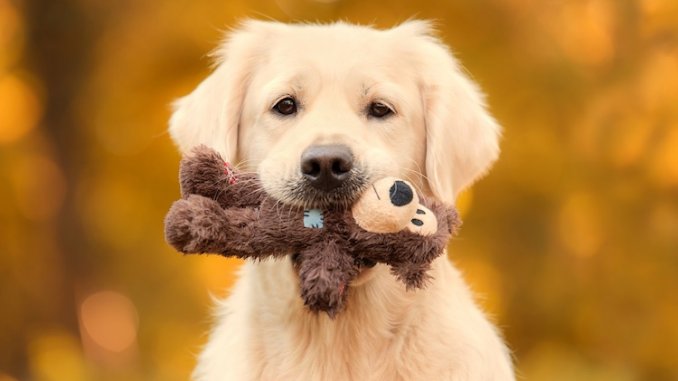








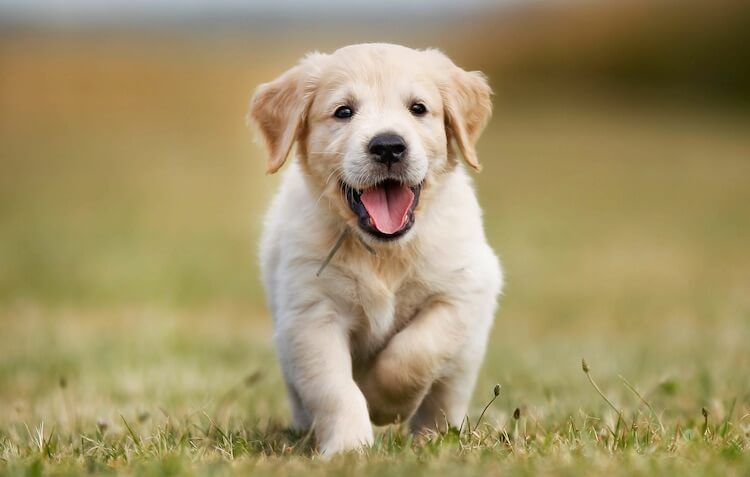
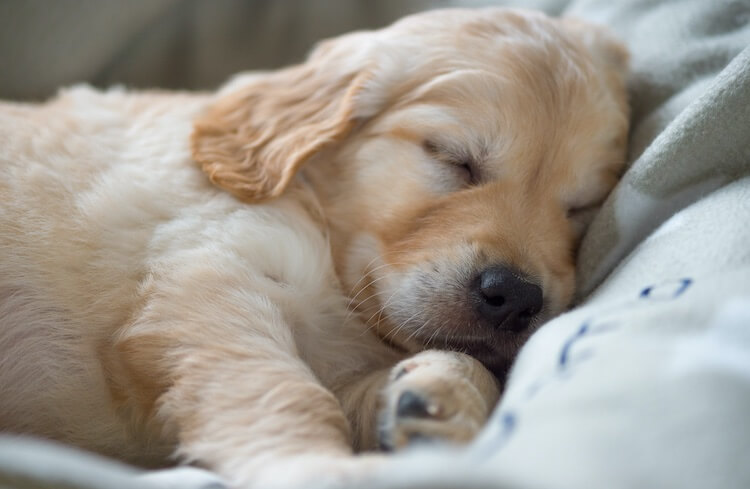
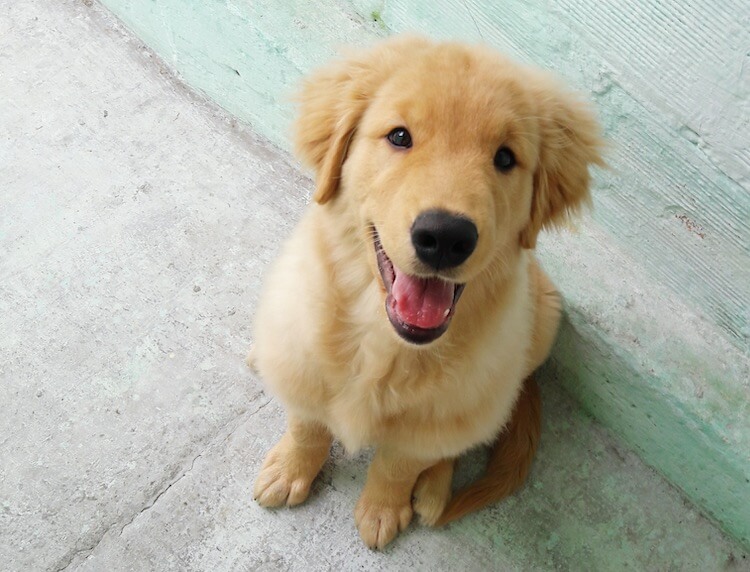
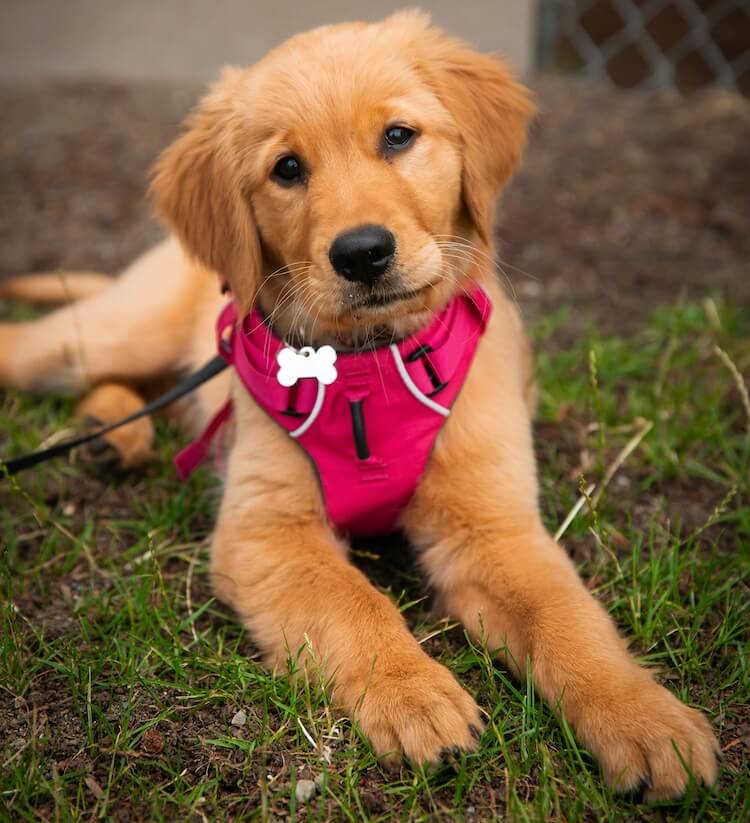
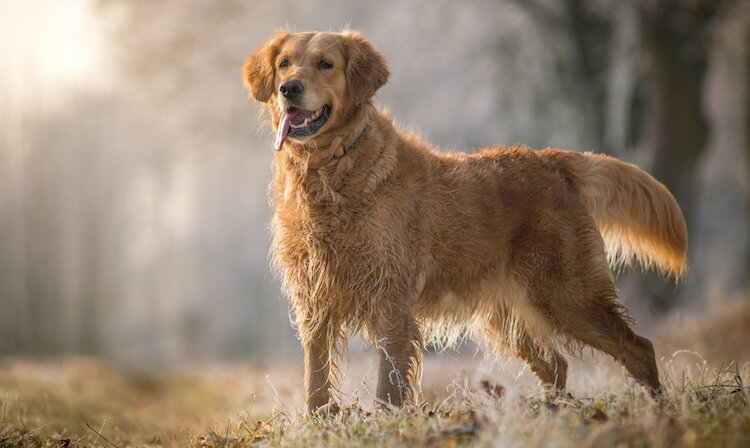
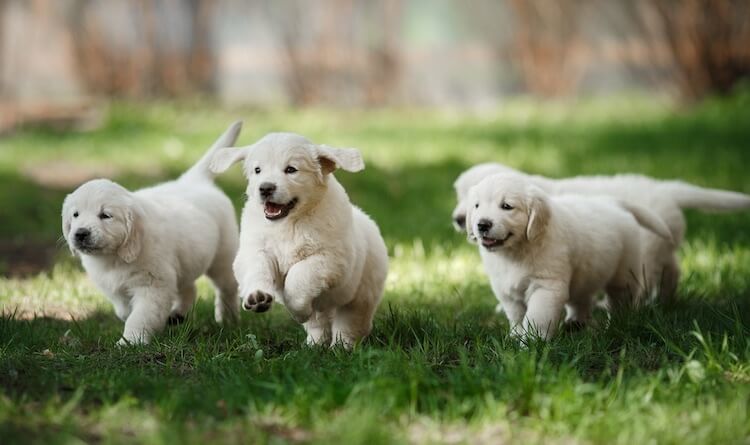
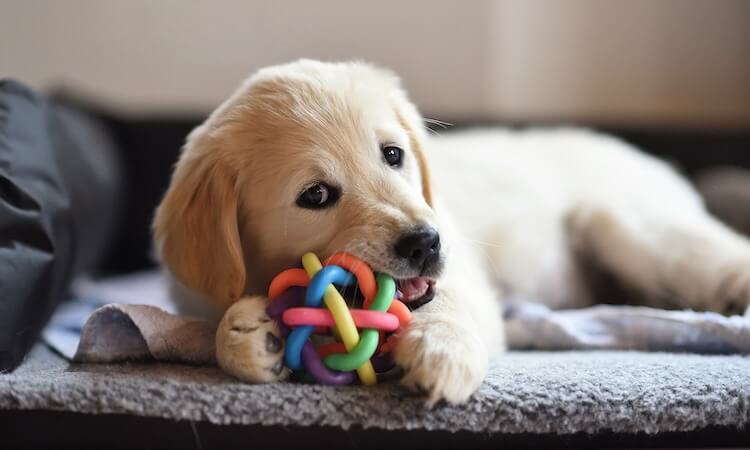

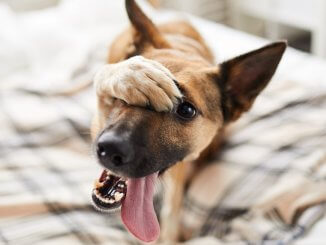
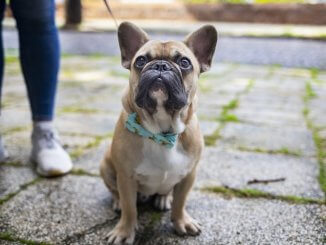
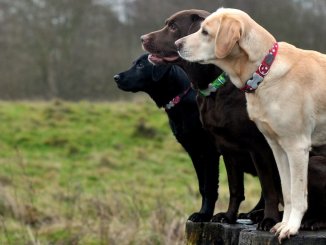
Teaching a golden retriever how to sit properly is something I really liked reading about. Even if it looks like a harmless breed, some of my family members might be afraid of any pet dog I get. I’ll make sure I teach it the right commands with your tips after I find a pet store that has them for adoption.